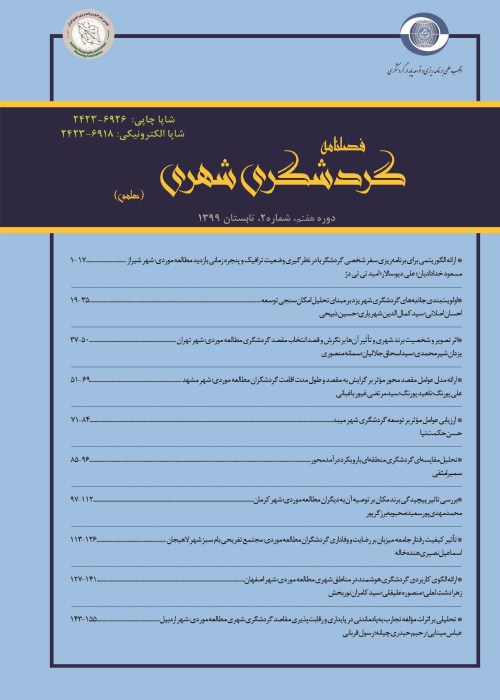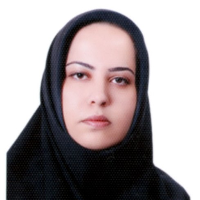Assessment of elderly Tourists' views about mashhad through “age-friendly city” factores
Author(s):
Article Type:
Research/Original Article (دارای رتبه معتبر)
Abstract:
The pattern of the global population growing trend toward older adults and this has led to a global phenomenon in the 21st century. The increasing burden of demographic aging presents unique challenges to families, communities, and nations, as well as to the promotion of health and well-being in later life. The process of ageing goes on in parallel with today’s trends of urbanization. The risks of city living impact everyone but seniors (defined as those aged 65 years or above) are particularly vulnerable due to age-related needs and preferences (e.g. to stay in their own homes, and/or near their children and grandchildren). Tourism is one of the Suitable activities for the elderly in order to improve their physical and mental aspects. Tourism compels them to mobility and come out of isolation and inactivity. Urban tourism becomes one of the main functions of the cities. If it can provide the demand and expectations of elderly tourist and create age-friendly city, it will lead to Tourist Satisfaction of tourism Destination. Making cities more age-friendly is a necessary and logical response to promote the wellbeing and contributions of older people and keep cities thriving. An age-friendly city encourages active ageing by optimizing opportunities for health, participation and security in order to enhance quality of life as people age.
This study seeks to examine the relationship and effectiveness of the components of age-friendly city on satisfaction and loyalty of Mashhad elderly tourist based on the European Customer Satisfaction Index (ECSI) model. 183 questionnaires answered by the elderly tourist of this destination were investigated. Data were tested based on the proposed conceptual model and European model to measure correlation by using Spearman test and Regression path analysis. The results show a positive association between image destination, expectations, and perceived quality and, perceived value in the level of satisfaction and loyalty of destination. By increasing the amount of each of the four factors, satisfaction and subsequently loyalty index increase. In the Following the path analysis, image destination is the most influential factor on loyalty of this destination directly and indirectly. In addition, Satisfaction directly and perceived quality indirectly have been effective to create elderly tourists loyalty to the religious and cultural destination.
This study seeks to examine the relationship and effectiveness of the components of age-friendly city on satisfaction and loyalty of Mashhad elderly tourist based on the European Customer Satisfaction Index (ECSI) model. 183 questionnaires answered by the elderly tourist of this destination were investigated. Data were tested based on the proposed conceptual model and European model to measure correlation by using Spearman test and Regression path analysis. The results show a positive association between image destination, expectations, and perceived quality and, perceived value in the level of satisfaction and loyalty of destination. By increasing the amount of each of the four factors, satisfaction and subsequently loyalty index increase. In the Following the path analysis, image destination is the most influential factor on loyalty of this destination directly and indirectly. In addition, Satisfaction directly and perceived quality indirectly have been effective to create elderly tourists loyalty to the religious and cultural destination.
Keywords:
Language:
Persian
Published:
journal of urban tourism, Volume:5 Issue: 3, 2018
Pages:
83 to 99
magiran.com/p1912837
دانلود و مطالعه متن این مقاله با یکی از روشهای زیر امکان پذیر است:
اشتراک شخصی
با عضویت و پرداخت آنلاین حق اشتراک یکساله به مبلغ 1,390,000ريال میتوانید 70 عنوان مطلب دانلود کنید!
اشتراک سازمانی
به کتابخانه دانشگاه یا محل کار خود پیشنهاد کنید تا اشتراک سازمانی این پایگاه را برای دسترسی نامحدود همه کاربران به متن مطالب تهیه نمایند!
توجه!
- حق عضویت دریافتی صرف حمایت از نشریات عضو و نگهداری، تکمیل و توسعه مگیران میشود.
- پرداخت حق اشتراک و دانلود مقالات اجازه بازنشر آن در سایر رسانههای چاپی و دیجیتال را به کاربر نمیدهد.
دسترسی سراسری کاربران دانشگاه پیام نور!
اعضای هیئت علمی و دانشجویان دانشگاه پیام نور در سراسر کشور، در صورت ثبت نام با ایمیل دانشگاهی، تا پایان فروردین ماه 1403 به مقالات سایت دسترسی خواهند داشت!
In order to view content subscription is required
Personal subscription
Subscribe magiran.com for 70 € euros via PayPal and download 70 articles during a year.
Organization subscription
Please contact us to subscribe your university or library for unlimited access!




